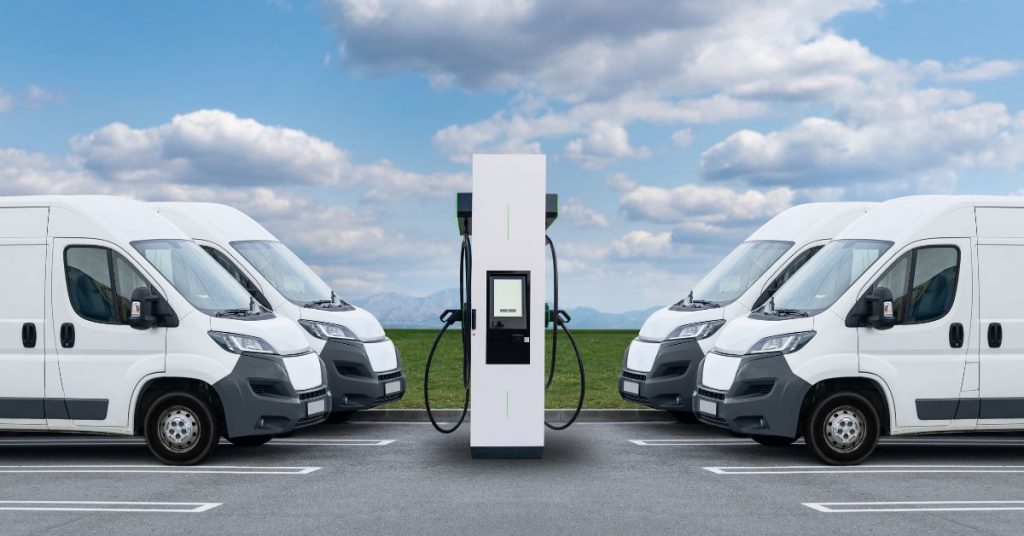
By James Morris
The electric vehicle (EV) revolution is accelerating, and businesses across the UK are increasingly investing in commercial EV charging infrastructure. However, navigating the regulatory landscape can be complex. Staying informed and compliant is crucial for a smooth and safe transition to electric mobility. Here are some of the regulations to look out for.
Smart charging requirements and safety
A key development in the regulatory landscape is the government’s push for “smart” charging. Regulations now mandate smart functionalities for all newly installed private domestic and workplace charge points. This means chargers must be able to receive, process, and react to signals, enabling features like off-peak charging and grid balancing. These smart charging requirements aim to alleviate strain on the national grid and encourage efficient energy usage. Dynamic Load Balancing (DLB) will be increasingly important as the EV fleet increases in size towards the UK 2030 sales deadline. Humax’s commercial AC and DC chargers offer smart capabilities powered by Monta, including RFID, and connectivity via WiFi and Ethernet.

For businesses providing public charging, the spotlight is on accessibility and payment ease. From November 2024, all new public charge points with a power output of 8kW or more were required to offer contactless payment options (having been put on a year’s notice by the Public Charge Point Regulations released in November 2023). This move streamlines the charging experience, making it more convenient for drivers and encouraging wider EV adoption.
Safety remains paramount, too. All commercial EV charger installations must adhere to the IET Wiring Regulations (BS 7671). This comprehensive standard ensures safe electrical installations, mitigating risks of fire, electric shock, and other hazards. Professional installation by qualified electricians is non-negotiable. Businesses should verify that installers are certified by organisations like NICEIC and ECA, or are OZEV approved, ensuring they possess the necessary expertise to handle high-voltage electrical systems.
Before installing chargers, businesses must conduct a thorough assessment of their electrical capacity. This involves evaluating the existing electrical infrastructure with the Distribution Network Operator (DNO) to ensure it can support the additional load. Upgrading the electrical supply may be necessary, which can involve significant costs and planning.
Making charging accessible and data privacy compliant
Accessibility is another critical consideration, particularly for public commercial charging locations. Businesses must ensure that charge points are easily accessible to all users, including those with disabilities. This includes providing adequate space for wheelchair users, clear signage, and accessible payment terminals. The specifications are detailed in the BSI’s PAS 1899 standard, which includes minimum requirements, supplementary best practice and additional guidance.
Planning permission may also be required to achieve accessibility, depending on the location and scale of the installation. Businesses should consult their local planning authority to determine whether planning permission is necessary and to understand any specific requirements. Factors such as the visual impact of the chargers and their proximity to residential areas can influence planning decisions.
The evolving regulatory landscape also encompasses data privacy and security. Smart chargers, by their nature, collect and transmit data, raising concerns about user privacy. Businesses must comply with the General Data Protection Regulation (GDPR) and other relevant data protection laws, ensuring transparent data handling practices and robust cybersecurity measures. This includes secure data storage, encryption, and clear communication with users about how their data is collected and used.
Commercial charger regulation futures
As commercial implementations develop, the government is increasingly focused on the interoperability of charging infrastructure. This aims to ensure that all EVs can seamlessly connect to any public charge point, regardless of the manufacturer or network. Standardisation efforts are underway to promote interoperability, which will ultimately enhance the user experience and accelerate EV adoption. Staying abreast of these standardisation initiatives is essential for businesses planning long-term charging infrastructure investments.
However, there are incentives for companies in their commercial charger rollout. To support businesses in their transition to EV charging, the government offers the Workplace Charging Scheme (WCS). This provides financial assistance towards the upfront costs of purchasing and installing EV charge points. Businesses can claim up to £350 per socket, up to a maximum of 40 sockets, making it a valuable resource for reducing installation expenses.
Staying informed about evolving regulations is crucial. The EV charging landscape is dynamic, with new technologies and regulations emerging regularly. Businesses should proactively monitor government announcements and industry updates to ensure ongoing compliance. By prioritising safety through approved installations, staying informed about evolving regulations, and leveraging available financial support, businesses can confidently navigate the complexities of commercial EV charging and contribute to a sustainable future. The transition to electric mobility is not just a technological shift; it’s a regulatory journey that requires diligence and foresight.
About the author
James Morris has 30 years of experience reporting on technology and the automotive industry. He runs UK electric vehicle website WhichEV.net and teaches journalism at City St George’s, University of London.



Pingback: Tipping Point for Electric Vans? Three-Quarters of UK Drivers Now See EVs as a Viable Business Tool | WhichEV.Net